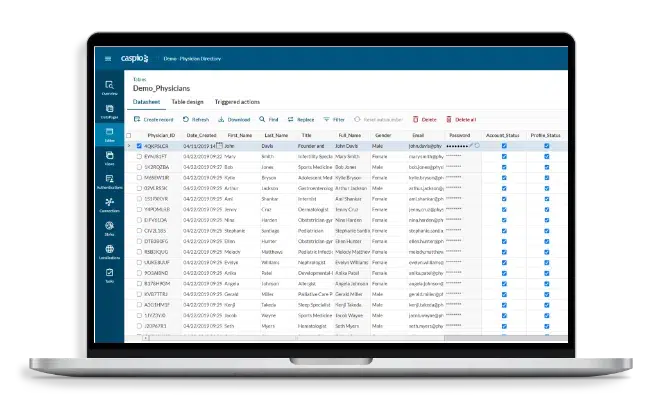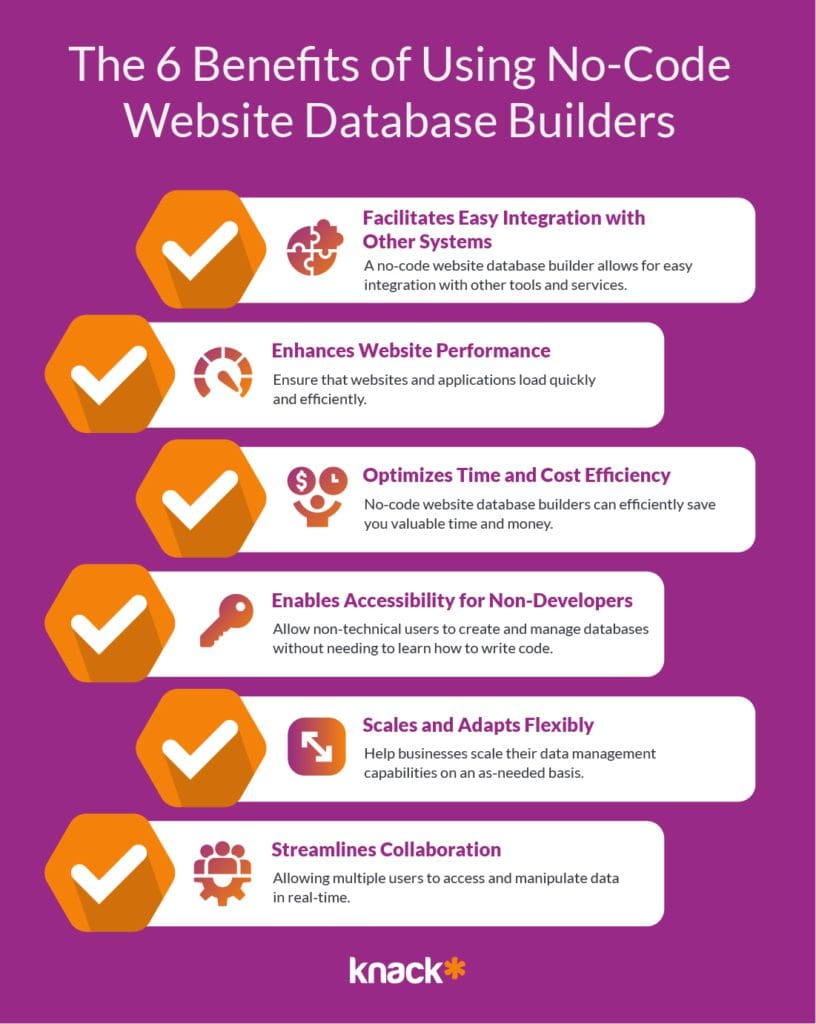No-Code Solutions for Open System Database Production: Build Without Coding Skills
No-Code Solutions for Open System Database Production: Build Without Coding Skills
Blog Article
Checking Out the Benefits of Scalable Databases That Require No Coding Abilities for Effective Data Administration Solutions
The development of scalable data sources that eliminate the need for coding skills offers a transformative chance for companies looking for effective data administration solutions. As we take into consideration the ramifications of such developments, it comes to be important to examine just how they can reshape the landscape of data monitoring and drive sustainable development in a competitive setting.
Improved Accessibility for Customers
Enhanced access for users is an essential aspect of scalable data sources, making certain that data management systems are user-friendly and user-friendly. In an age where data-driven choices are extremely important, accessibility enables a bigger variety of users, including those without substantial technological experience, to involve with data source systems effectively. This democratization of information accessibility facilitates boosted collaboration throughout divisions, encouraging employees to remove understandings and make informed decisions.
User-friendly interfaces, such as drag-and-drop features and visual data depiction, streamline complex data interactions. These enhancements reduce the discovering contour related to typical database management, enabling customers to focus on leveraging data instead than coming to grips with technical complexities. Scalable databases usually integrate real-time analytics and personalized dashboards, supplying users with prompt insights tailored to their details needs.

Cost-Effectiveness and Resource Cost Savings
Efficient information monitoring not just rests on accessibility yet likewise on cost-effectiveness and resource financial savings. Scalable data sources developed for users with no coding abilities dramatically minimize financial worries commonly connected with conventional data source monitoring systems. By eliminating the need for specialized shows experience, companies can assign their sources more successfully, concentrating funds on core company activities as opposed to considerable training or working with knowledgeable employees.
Furthermore, these data sources commonly utilize cloud-based solutions, which better decrease costs associated with hardware and upkeep. Organizations can scale their database remedies according to their requirements, avoiding the expenditures sustained from over-provisioning resources. This adaptability indicates businesses can adjust to changing needs without incurring unneeded costs, causing considerable lasting cost savings.
Additionally, easy to use user interfaces streamline data entrance and monitoring processes, lowering the time spent on management tasks. This effectiveness converts right into labor cost financial savings, permitting teams to concentrate on strategic initiatives instead of routine maintenance. On the whole, adopting scalable data sources that require no coding skills fosters a much more cost-effective strategy to data management, enabling companies to optimize their sources while preserving high degrees of operational performance.
Improved Cooperation Across Teams

In addition, scalable databases assist in smooth communication among group participants. With user-friendly interfaces that need no coding abilities, employees can quickly develop, customize, and share records or control panels tailored to their certain needs. This democratization of data equips non-technical customers to add insights, improving the collaborative environment.
In addition, these databases support concurrent accessibility, allowing several customers to service the same dataset all at once. This feature enhances performance, as groups can engage in joint data analysis without the threat of version control issues. The capability to leave remarks or notes straight within the database further promotes dialogue and clears up information analyses.
Streamlined Data Management Processes
In today's data-driven environment, organizations acknowledge the requirement of streamlined data management processes to make the most of effectiveness and accuracy. By leveraging scalable databases that need no coding abilities, services can simplify their data handling and reduce the intricacies usually related to standard data source systems. This availability encourages non-technical customers to involve directly with data, assisting in quicker decision-making and lowering dependence on specialized IT workers.
Structured data management procedures improve process by automating routine jobs such as information entry, validation, and coverage. Automated information integration guarantees that information from various resources is aggregated perfectly, eliminating silos and fostering a linked sight of vital company metrics (no-code). Additionally, easy to use interfaces permit personnel to control information quickly, allowing them to produce understandings that drive calculated initiatives without the requirement for extensive training.
This effectiveness not just increases operational processes yet also lessens the possibility for human error, making certain that data remains trustworthy and precise. Ultimately, streamlined data monitoring procedures via scalable databases result in boosted productivity, enabling companies to concentrate on core tasks while ensuring that their data administration techniques are efficient and effective.
Scalability for Expanding Companies
For broadening ventures, the capacity to scale up or down is critical. A scalable data source can handle an increase of information created from brand-new clients, items, or solutions, making certain that company operations stay nonstop. These data sources supply the ability to handle peak tons effectively, which is vital throughout periods of rapid growth or seasonal spikes.
In addition, several scalable data source options are designed with straightforward interfaces that call for no coding skills, empowering non-technical personnel to manage information successfully (no-code). This democratization of data monitoring enables companies to assign sources tactically and lower reliance on specialized IT employees
Eventually, taking on a scalable database not just improves functional effectiveness but additionally fosters a setting where businesses can introduce and evolve without the restrictions of conventional data source systems. This adaptability settings companies for long-term success in today's affordable landscape.
Conclusion
To conclude, scalable data sources that require no coding abilities give considerable benefits for efficient information monitoring. These systems improve ease of access for non-technical customers, minimize functional costs, and advertise collaboration across groups. By streamlining data monitoring processes and using scalability for expanding companies, such remedies enable companies to adapt to transforming needs properly. Eventually, the fostering of these user-friendly data sources promotes technology and settings organizations for long-term success in a dynamic setting.
Boosted availability i loved this for individuals is a critical element of scalable databases, guaranteeing that information management systems are straightforward and user-friendly.Straightforward user interfaces, such as visual information and drag-and-drop attributes depiction, simplify intricate information interactions. Overall, embracing scalable data sources that special info need no coding abilities cultivates a much more economical technique to data administration, making it possible for organizations to maximize their resources while keeping high degrees of functional efficiency.
By leveraging scalable data sources that need no coding skills, businesses can streamline their information handling and reduce the intricacies usually connected with standard database systems - no-code.Streamlined information administration processes improve process by automating routine jobs such as information entrance, validation, and coverage
Report this page